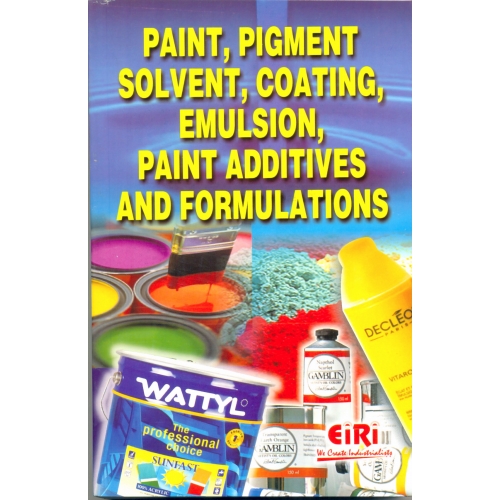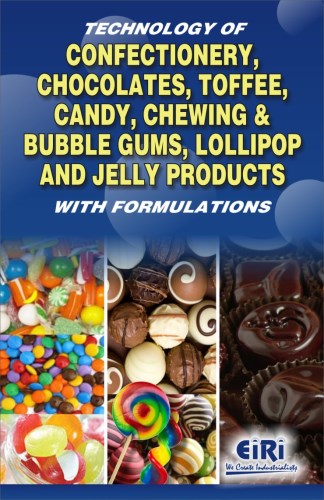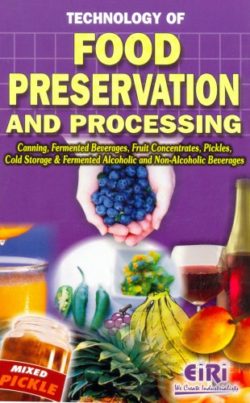Description
PAINT, PIGMENT SOLVENT, COATING, EMULSION, PAINT ADDITIVES AND FORMULATIONS
PAINT ADDITIVES
Skills of addition
Matrix dilution
Wetting and Dispersing Agents
Wetting and Dispersion
Wetting
Dispersion
Anlonic Surfactants
Cationic Surfactants
Non Ionic Surfactants
Ampholeric Surfactants
Method of addition
Side effects
Caution
Additives for viscosity control
Side effects
Scratch, mar, slip and abrasion resistance
Natural Waxes
Synthetic waxes Petroleum wax
Microcrystalline wax
Polyethylene and polypropylene waxes
PTFE
Addition method
Side effects
Thixotropic and Antiselling Agents
Setting
Organioclays
How to use
Side effects
Organic thixotropic agents
Method of addition
Thxotropic agents for water borne coatings
Dissolution
Associative thickeners
Side effects
Anti sinning agents
Side Effects
Anti Foaming Agents and Defoamers
Defoamers
Application Method
Side effects
Coupling Compounds (Adhesion Promoters)
Mode of Use
Suppliers
Desiccants
Mode of use
Side effects
Manufacturers
Wet Edge Additives
The wet edge problem
Soltions
Manufacturers
Side effects
Driers
Over basic driers
Addition norms
Side effects
Side effects
Activators
Biocides
Testing and Selection of a biocide
UV, Light and heat Stabilizers
Oxidation catalyzed by UV
Anti Oxidants
Hindered Amines light stabilizers (HALS)
Side effects
Aromatic Amines
Organic Sulfur Compounds
Phosphorous Compounds
SOLVENTS
Purpose of solvent in a paint
True Solvent
Latent solvent or secondary
Solvent or co solvent
Non solvent/Diluent
Testing of Solvents
Physical tests
Chemical tests
Bottling point or distillation range
Types of solvents
Hydrocarbon solvents
Benzene, Toluene, Xylene (BTX)
Halogenated hydrocarbons
Oxygeneted hydrocarbon
PIGMENTS
Physical Properties
Solubility
water solubles
Should be either white or coloured
Particle size
Refractive index
Density
Colour, shade and strength
Porosity
Melting point and thermal stability
Chemical Properties
Purity
Resistance to acids, alkalies and chemicals
Resistance to degradation due to oxidation
Pigments should have no ion exchange properties
Commercial aspects
Toxicity and environmental issues
Characterization and physical relationships
Particle size and surface area
Application problems
Important Members
Organic Pigments
Iso Indolinone Pigments
Metal complex pigments
Copper phthalocyanine
Phthalocyanine Green
Quinacridone
Pigment violet 23
HOW TO FORMULATE A PAINT
Optimization of Surfactants by Dinlel How point method
Formulating guidelines
Steel
Primers for Steel
General Principles of Formulation
Additives for enhancement of performance
Organic Corrosion inhibitors
Effects of water on solvent based paint properties
Zinc rich primers (Sacrificial corrosion Inhibitors)
INHIBITIVE PRIMERS FOR METAL
Fundamental considerations
Oxidizing Inhibitors
Non-Oxidizing inhibitors
Pigment solubility
Design strategies
Prime pigment component
Inhibitive pigments
Extender package
Pigmentary thixotropes
Design considerations
Optimizing PVC/CPVC
PAINTS FOR SHIPS
External
Internal
Selection of Underwater coating system
Ainticorrosive compositions
Antifouling Compositions
Soluble and Insoluble matrix type
Typical formulation
Tie coat/sealer coat
Boottoppings
DRYING AND CURING ADDITIVES
Introduction
Physically drying systems
Chemical drying/curing systems
Driers for air-drying systems
Driers for water borne systems
Catalysts for chemical curing systems
Photo initiators
Inititors
LIGHT STABILIZERS
Introduction
Degradation mechanism
Light stabilizers
Ultraviolet absorbers
Excited state quenchers
Hindered amine light stabilizers
FOAM CONTROL ADDITIVES
Introduction
Foam formation
Composition of foam
control additives
ADDITIVES FOR POWDER COATINGS
Introduction
Curing agents
Catalysts
UV curable powders
CALCIUM ALUMINIUM SILICATE AND MAGNESIUM ALUMINIUM SILICATE
Introduction
Hiding by spacing of Tio2 pigment particles
Present work
Experimental
Materials
Structural and morphological study morphological study
Methods for preparing different paint compositions
Characterisation of different properties of paints
Result & discussion
% Non volatile matter
Viscosity
Finish & grinding
Mechanical properties
Opacity
Whiteness index
Gloss
Tinting strength
PAINT STAINERS
Introduction
Characteristics of ideal stainers
Experimental
The reactor
Preparation of emulsion
Preparation of stainers
Results and discussion
Conclusion
PAINTING OF AIRCRAFT
Introduction
Requirement of aircraft coatings
Types of aircraft coatings
Synthetic coatings
Nitrocellulose coatings
Acrylic coatings
Epoxy coatings
Polyurethane coatings
Paint application
Surface preparation
Aluminium and its alloys
Steel and magnesium alloys
Compositions
Application method/detects
Adhesion
Lifting
Orange peel
Dry spray
Sagging/running
Blushing
ANIONIC BITUMEN EMULSIONS
Introduction
Basic bitumen chemistry
Bitumen as a coating material
The need to develop Cold Technology
The Science of bitumen emulsions A brief review
Anionic bitumen emulsions
Anionic surfactants: soaps
Polymer modification of bitumen emulsions
Rubber modified bitumen emulsion coatings
RHEOLOGY MODIFIERS IN WATERBORNE PAINTS
Introduction
Rheology modifiers for waterbased paints
Experimental
Materials and Methods
Preparation of distemper plastic emulsion paint (interior) and exterior house paint.
Characterization of distemper, plastic emulsion paint and exterior house paint
Results and discussion Conclusion
HIGH PERFORMANCE COATINGS
Introduction
High performance coatings
Acrylic textured coatings
Thermal insulating paint
Anti carbonation coatings
High build acrylic coatings for bridges
Epoxy polyurethane floor coatings antiskids/screeds
Silicone siloxane penetrating primers
Water repellent coatings
Heavy duty glass flakes coatings
Fire retardant and infumescent coatings
Some of the projects with high performance coatings
Applications of high performance coatings
BIO-DIESEL OPPORTUNITIES FOR THE COATING INDUSTRY
Glycerine
Epichloro hydrin, glycedol and polyglycerol
Carbon source for fermentation product
Food additives
Carbon credits
ROAD MARKING PAINTS
Introduction
Composition of HMTP road marking paint
Properties
Binder for HMTP road marking paint
Aim of present investigation
Experimental
Preparation of rosin modified lac
Preparation of HMTP of marking paint
Application and evaluation
Testing Methods
Results and discussions
EMULSIONS
Introduction
Experimentation
Emulsion processing
Paint processing
Results and discussion
Glass transition temperature for desired coating
Speciality monomer incorporation
Iso bornyl methacrylate
Iso bornyl methacrylate
Iso decyl acrylate
Veova-11
Ethyl methacrylate
Effect of the crosslinkers
Hexane Dial diacrylate (HDODA)
Glycidyl Metha Acrylate (GMA)
Aceto Acetoxyethyl Methacrylate (AAEMA)
Effect of the photo initiator
2.2 dimethoxy 2phenylacetophenone (DMPA)
Benzophenone deriva’ve (BPD)
Effect of polymerizable surfactant
Conclusion
SILICA GELS
Introduction
Mechanism of matting
The “ideal” base material
Silica gel technology features and benefits
Porosity they key to high efficiency
Particle size control optimum gloss reduction and surface smoothness
Surface modification stability and compatibility
Advances in silica gel metting agents
EMULSION PAINTS
Protective Colloid
pH
Emulsion Formation
Emulsion Polymerization
Ingredients
Post emulsification
Stability of Emulsions
Phase Volume
PAINT AND VARNISH REMOVERS
Paint Removal
Formulation
Solvent Paint and Varnish Removers
Chemical Removers
Nonchlorinated Solvent Paint Removers
Mechanism of Paint Removal
Method of paint Removal
SPRAY PAINTING
Conventional Air Spray
Airless Spray
Hot Spray
Dual Component
Electrostatic Spray
Spraying Today’s Paints
Automation and Spraying
The Professional Spraymain
PAINT BASES
Bronzing Solution for Paints
Fireproof Paints
Paints for gold and Gilding
Gold Enamel Paints
Graining with Paint
Luminous Paint
Paints for Metal Surfaces
Rust Paints
Paints for roofs and roof Papers
Rubber base (Latex) Paints
Paints, Stains etc. for Ships
Paints for Walls of Cement, Plaster Hard Finish etc.
Paints waterproof and weatherproof
Paint for wood
Durable House Paint
Misellaneous Recipes, Paints etc.
Tire Presserving Paint
PAINT, VANRISH AND ENAMEL REMOVERS
To remove Old Oil, Paint or Varnish Coats
PAINT MIXING AND GRINDING
Paint Mixing and Grinding
House Paints
Red Barn Paints
Rust and Weather Proof Paints
Roofing and Paints
Touch up Black
Top Dressings
Varnish Type Dressing
Lacquer Type Dressing
Water Stains
PIGMENTS FORMULAE
Grounds for Graining Colours
Positive Colours
Gray Tints
Colour Testing
Pile Ointments
Plant Parasites
Plants
Engineers India Research Institute (EIRI) is a renowned name in the industrial world for offering technical and financial consultancy services.
EIRI services are:
Detailed Feasibility Reports
New Project Identification
Project Feasibility and Market Study
Identification of Lucrative Industrial Project Opportunities
Preparation of Project Profiles / Pre-Investment and Detailed Feasibility Studies,
Market Surveys / Studies, Market Survey Cum Detailed Techno-Economic Feasibility Reports
Project Reports in CD Roms
Identification of Plant /Process/Machinery and Equipment, Industrial General Guidance for setting up new industrial projects.
Our most up-to-date and Technologically Advanced Industrial Project Reports, categorized with respect to Financial Outlays and Sector – wise Classification are immensely useful for :
Existing Small or Medium Scale Industrialists facing competition from large houses
Young Entrepreneurs dreaming to start their own industrial enterprise
Young Graduates and Professionals wishing to begin their career
Industrialists interested in Debottlenecking their capacities & New Product – Lines
Large Industrial Houses pursuing Expansion, Growth and Diversification Plans






